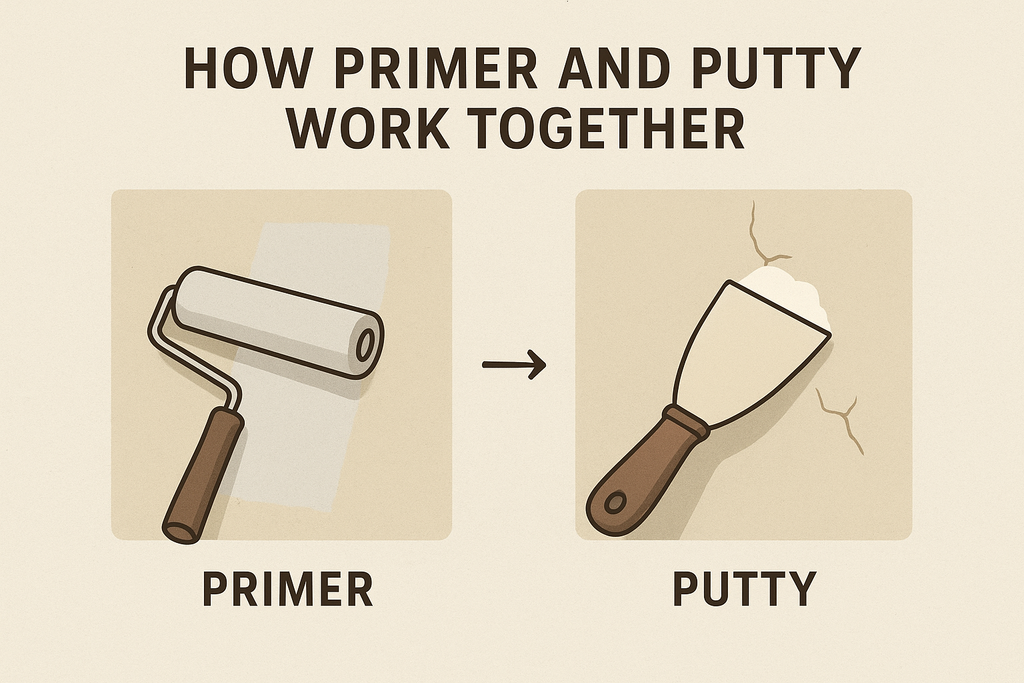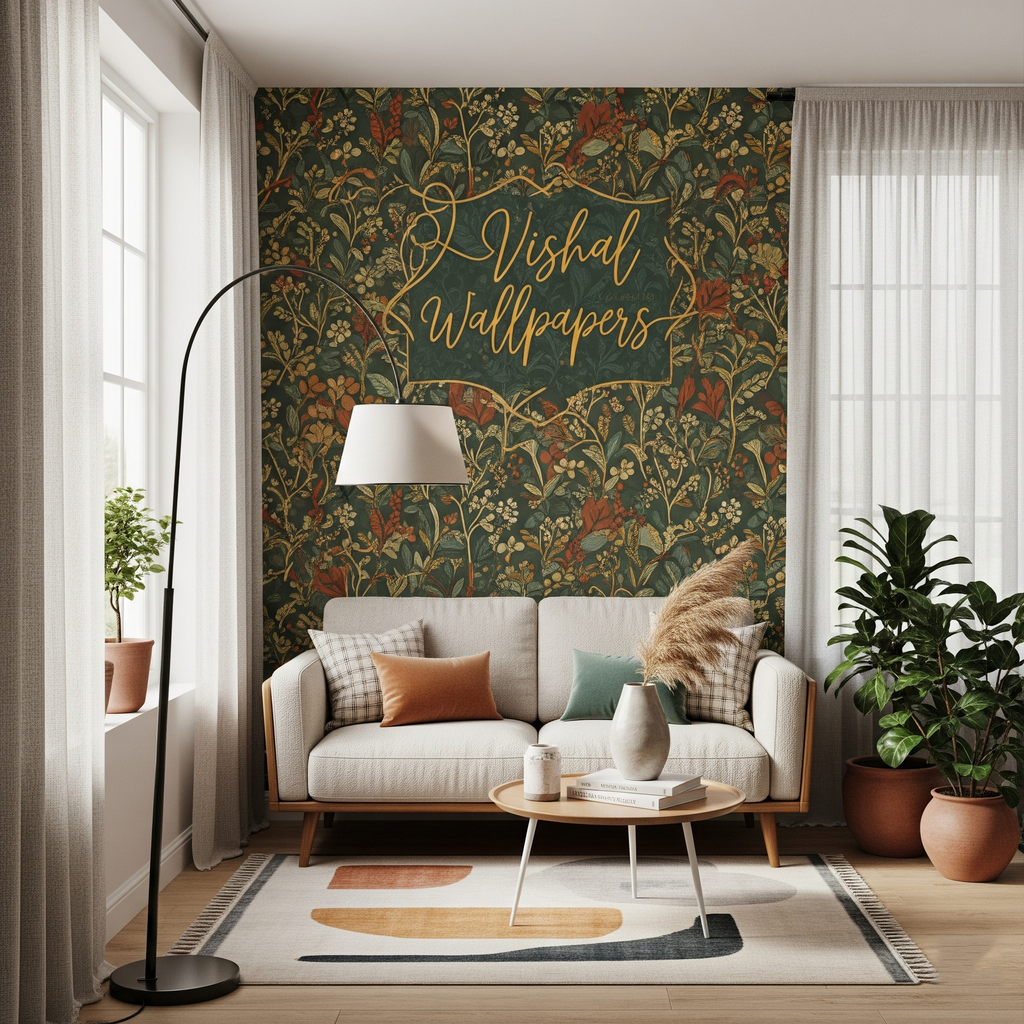
How Primer and Putty Create a Flawless Wall Surface for Wallpapers ?

How Primer and Putty Work Together for a Flawless Wall Surface
The most effective process for a flawless wall surface, whether you're painting or applying wallpaper from a brand like Vishal Wallpapers, involves a specific sequence of application:
- Surface Preparation: Clean the wall thoroughly, removing any dust, grease, or loose particles.
- First Coat of Primer (Optional but Recommended): On newly plastered or highly porous walls, a first coat of primer can be applied to seal the surface before the putty. This ensures better adhesion of the putty.
- Putty Application: Apply one or two thin, even coats of putty to fill all the imperfections. Allow each coat to dry completely and sand the surface to a smooth finish before applying the next coat.
- Final Coat of Primer: This is a crucial step after the putty has been applied and sanded. The final coat of primer seals the putty, providing a uniform, non-porous base that is ready for the final finish. This step is particularly vital if you are planning to install wallpaper, as it ensures proper adhesion and a smooth, long-lasting application.
- Final Finish: Once the primer is completely dry, you can apply your chosen paint or install the wallpaper from brands like Vishal Wallpapers. Thanks to the combined efforts of the putty and primer, the surface will be perfectly prepared, ensuring that your paint or wallpaper looks its best and lasts for years to come.
The Role of Primer.
Primer is a preliminary coating applied before the final paint. Its main purpose is to:
- Improve adhesion: Primer acts as a bonding agent, forming a gripping surface that allows the paint to stick better to the wall. This is crucial for a long-lasting finish, as it prevents the paint from peeling or bubbling.
- Seal the surface: Primer seals porous surfaces, such as new plaster or drywall, preventing them from absorbing the paint unevenly. This results in a more uniform and vibrant color.
- Block stains: Primer can act as a barrier against stains, such as water damage or smoke, preventing them from bleeding through the final paint coat.
- Enhance color vibrancy: A primer provides a neutral, uniform base for the paint, which helps the final color appear truer, richer, and more vibrant. This is especially important when changing from a dark color to a light one.
The Role of Putty.
Wall putty is a white, cement-based or acrylic-based compound that is applied to the wall surface to address imperfections. Its primary function is to:
- Smooth the surface: Putty fills in minor cracks, holes, dents, and undulations, creating a perfectly level and even base.
- Enhance durability: By providing a stable foundation, putty prevents the paint from peeling, cracking, or flaking over time.
- Increase moisture resistance: Certain types of putty, especially cement-based ones, create a protective barrier that helps prevent moisture from seeping into the wall.
- Reduce paint consumption: A smooth, uniform surface created by putty ensures that the paint is absorbed evenly, reducing the number of coats required to achieve the desired finish.







